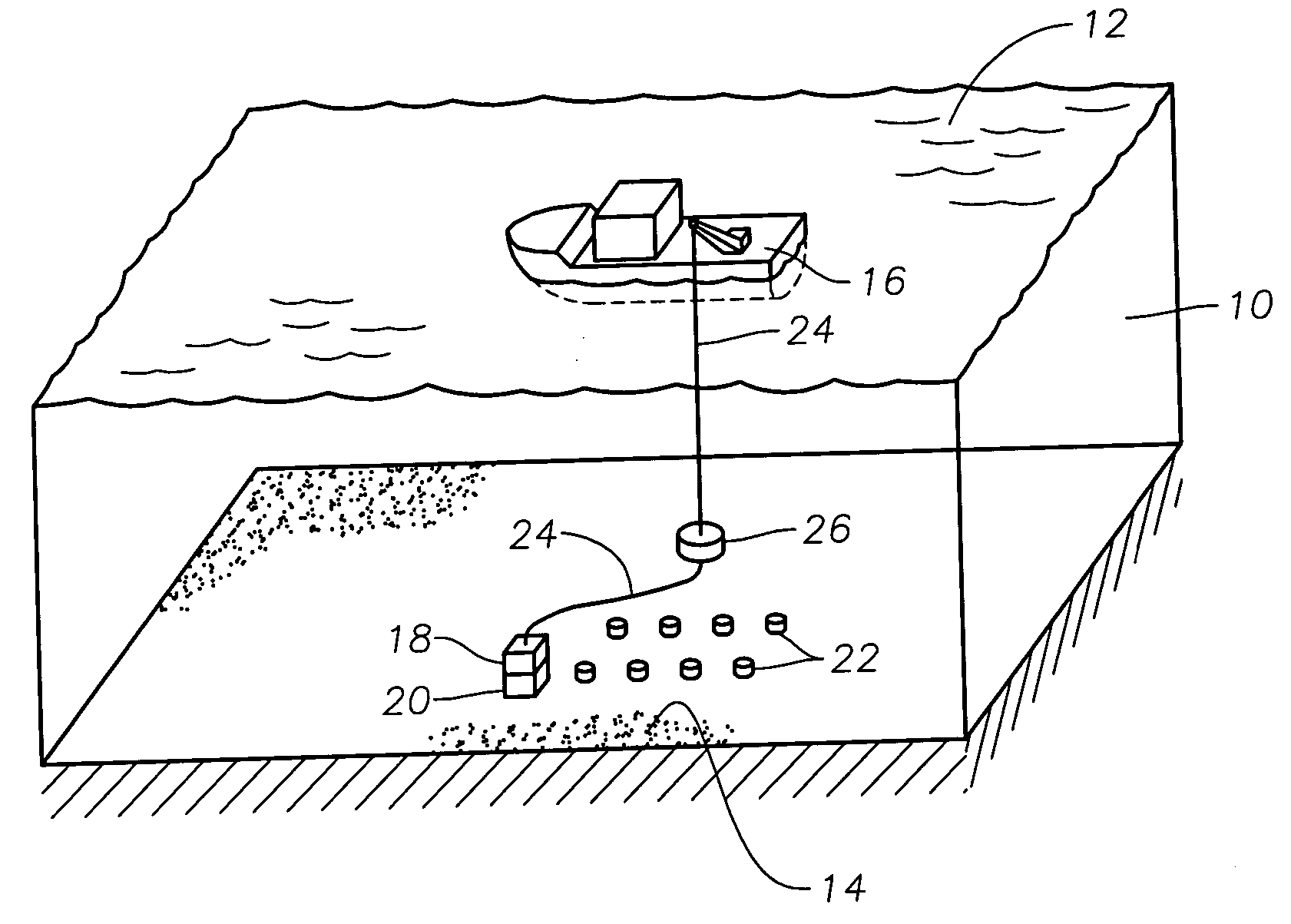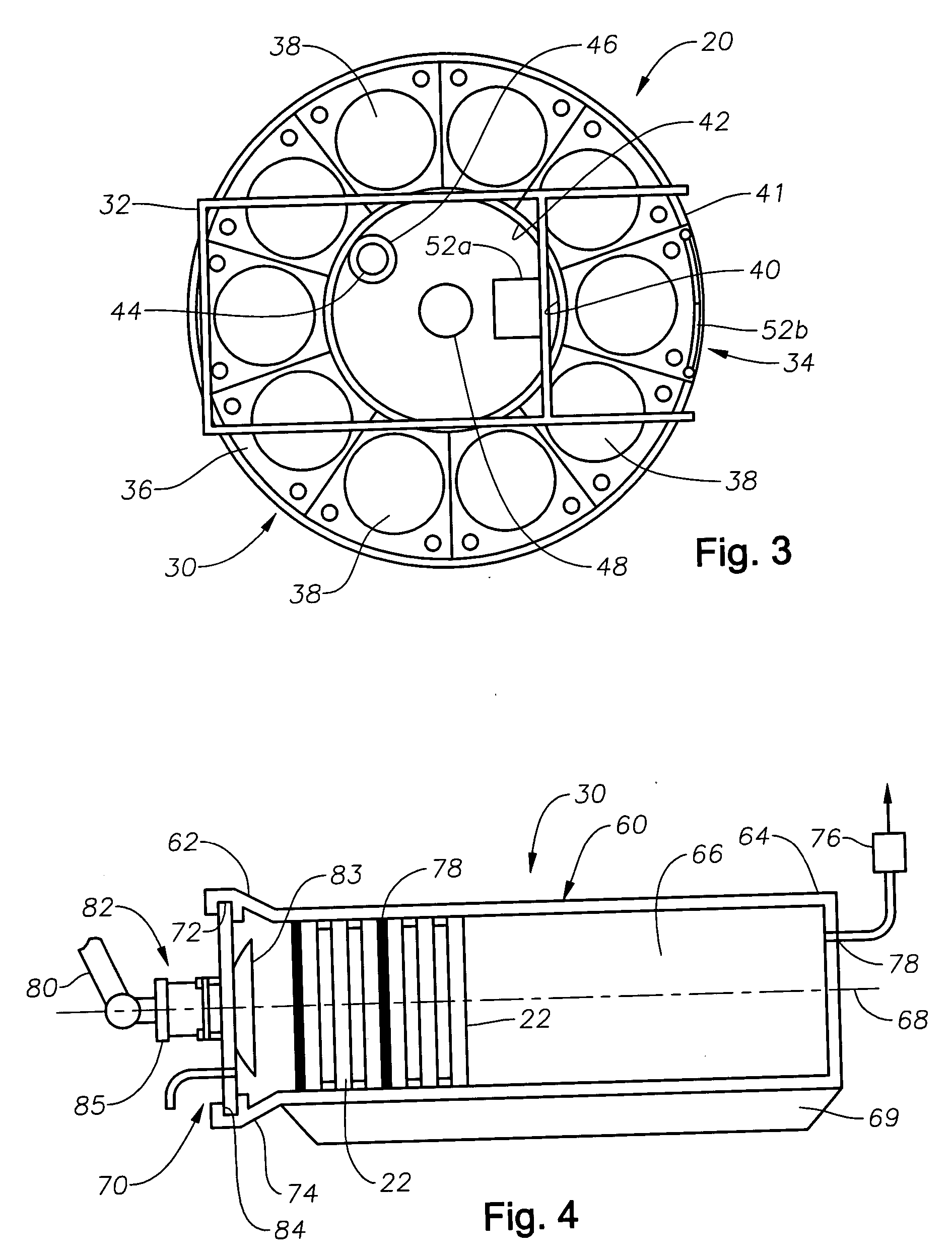Method and apparatus for deployment of ocean bottom seismometers
a seismometer and ocean bottom technology, applied in underwater equipment, special-purpose vessels, instruments, etc., can solve the problems of simple complicated deployment and retrieval of seismic receiver units, and increased the likelihood of cable breakage or equipment failur
- Summary
- Abstract
- Description
- Claims
- Application Information
AI Technical Summary
Benefits of technology
Problems solved by technology
Method used
Image
Examples
Embodiment Construction
[0049] In the detailed description of the invention, like numerals are employed to designate like parts throughout. Various items of equipment, such as fasteners, fittings, etc., may be omitted to simplify the description. However, those skilled in the art will realize that such conventional equipment can be employed as desired.
[0050] With reference to FIG. 1, there is shown a body of water 10 having a surface 12 and a seabed 14. A vessel or operations platform 16 is positioned on the surface 12 of the water 10. A remotely operated vehicle (“ROV”) or similar device 18 is in communication with vessel 16. A carrier 20 is attached to ROV 18. Carrier 20 is disposed for receipt of a plurality of ocean bottom seismic receiver units 22. ROV 18 is capable of moving between surface 12 and seabed 14 in order to ferry ocean bottom seismic receiver units 22 therebetween. ROV 18 may also be utilized to remove units 22 from carrier 20 and place units 22 on seabed 14. Likewise, ROV 18 may be util...
PUM
 Login to View More
Login to View More Abstract
Description
Claims
Application Information
 Login to View More
Login to View More - R&D
- Intellectual Property
- Life Sciences
- Materials
- Tech Scout
- Unparalleled Data Quality
- Higher Quality Content
- 60% Fewer Hallucinations
Browse by: Latest US Patents, China's latest patents, Technical Efficacy Thesaurus, Application Domain, Technology Topic, Popular Technical Reports.
© 2025 PatSnap. All rights reserved.Legal|Privacy policy|Modern Slavery Act Transparency Statement|Sitemap|About US| Contact US: help@patsnap.com



